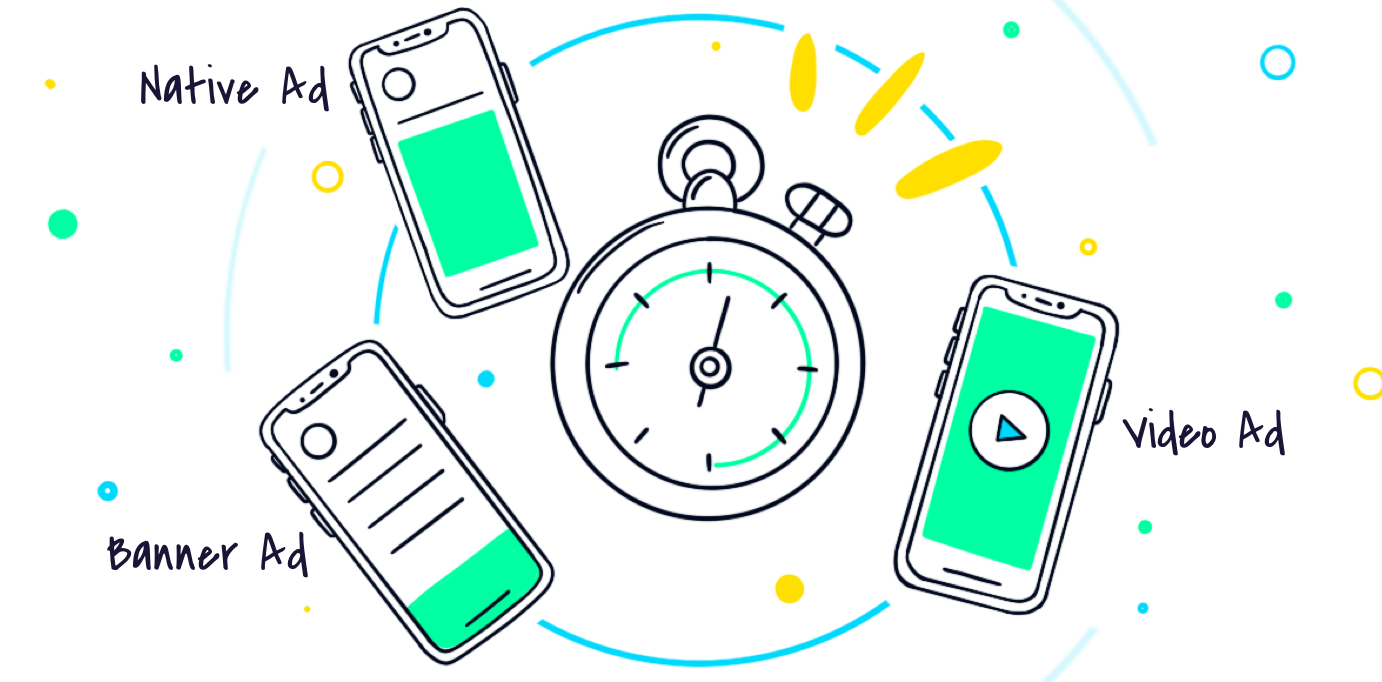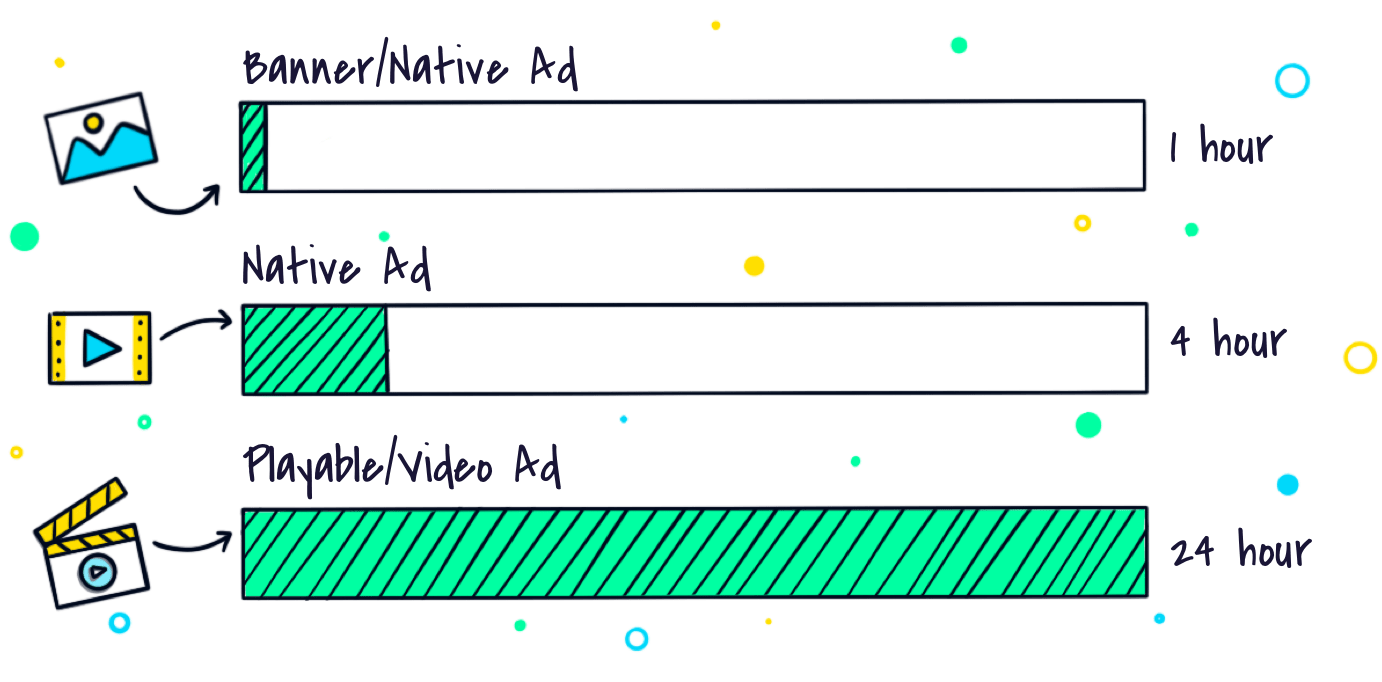Your source for everything mobile UA, from the basics to contentious standards, the glossary can help and inform both aspiring growth managers and experienced mobile app developers

Attribution
View-Through Attribution -> Page 1 of
View-Through Attribution
The issue of view-through attribution is a controversial one amongst advertisers. The debate is around the importance and perceived contribution of a view (i.e an impression) in otherwise seemingly organic conversion.
Some advertisers will claim that attributing any ad view, even a small banner ad, that had no user engagement or definitive proof that it was noticed by the user, to a conversion that happened hours later is in fact attributing an organic conversion to the banner ad’s buyer.
Since this is indeed problematic, we see it fit to break it down and show that there are ways to measure the influence of an ad view on a conversion and limit VTA in a way that would minimize the risk of the advertiser, while still rewarding buyers with substantial impressions.
How to measure users’ intent to convert
The customary VTA window is 24 hours to all ad types (be it a video ad, a banner, a native ad, or a playable ad, though we know different ads have proven to have different influences on users). One way to authenticate users’ intent to convert is by setting different VTA windows for different types of ads (the more engaging the ad, the longer the window), making sure the attribution is sensible in the effect the impression might have had on the users.
For example, playable ads and video ads, which are considered to be more immersive, can get a 24-hour window, while banner ads, considered to be significantly less immersive, can get a single 1-hour window.
In addition to that, advertisers can take another precaution and validate users’ intent by checking, post-conversion, if those users who had converted had previous (expired) attribution windows. If the converted users had previous views, clicks, or other ad engagements then the potential intent was rightfully targeted and the ad view can be attributed to the media buyer.
SRNs vs. DSPs
In the current marketing landscape, there’s a clear distinction between SRNs (Self-reporting Networks) and DSPs (who report through an attribution platform). SRNs have a set, default, non-negotiable, view-through window which all advertisers must accept as is, whereas DSPs are dependent on an advertiser’s choice to agree to said VTA window.
In some cases, advertisers will use their liberties and won’t agree to set a VTA window with a DSP they’re working with. This results in an uneven playing field where DSPs and SRNs are showing the same ads in the same placements, while the SRN ad has a VTA window and the DSP ad doesn’t, preserving the sometimes false image of better performance of SRNs (i.e using a 24-hour window for all types of ads might actually show more organic conversions attributed to the SRN).
A rewarded video impression that is shown via Facebook’s SDK in their Audience Network is no different from a rewarded video impression shown on a different SDK via OpenRTB through a DSP, thus their VTA windows should be equal. Since advertisers might still feel reluctant to give DSPs the same VTA windows, we suggest the middle ground mentioned above, where the type of ad influences the length of the window.
The importance of customized VTA windows
The difference in length of VTA windows will help preserve the quality of the view. Instead of having buyers using it to their advantage. In a situation where all view-through windows are equal (no matter the type of ad), media buyers can decide to strategically buy banners and native ads, which are much cheaper, and use them to “tag” more users then they would by buying interstitial ads.
These users have now had an impression of the ad, a cheap impression on the buyer’s side, and are validated for a view-through window for the next 24 hours. This vast tagging technique increases the buyer’s chances of being attributed a conversion by exploiting the window.
Tagging more users means increasing your chances of catching more users who would’ve otherwise converted organically. It’s easy to doubt that an impression from a 320×50 banner ad made 14 hours prior to a conversion had limited contribution if any at all.
Verifying impressions in video ads
As an additional means of verification, when it comes to video ads, advertisers can agree with their DSP on a point in the video in which the impression would be triggered – i.e. the midpoint, the end, or when the end card is rendered when using the VAST protocol. For a playable ad, it can be a specific action that triggers an impression, ensuring the user was exposed to most of the content or engaged with the ad, therefore it had a significant impact on the user.
When marketers have a better understanding of the metrics involved and employ these tools to verify the ways in which the DSP they’re partnering with is using the window, there’s no real reason to not provide them with a VTA window.



